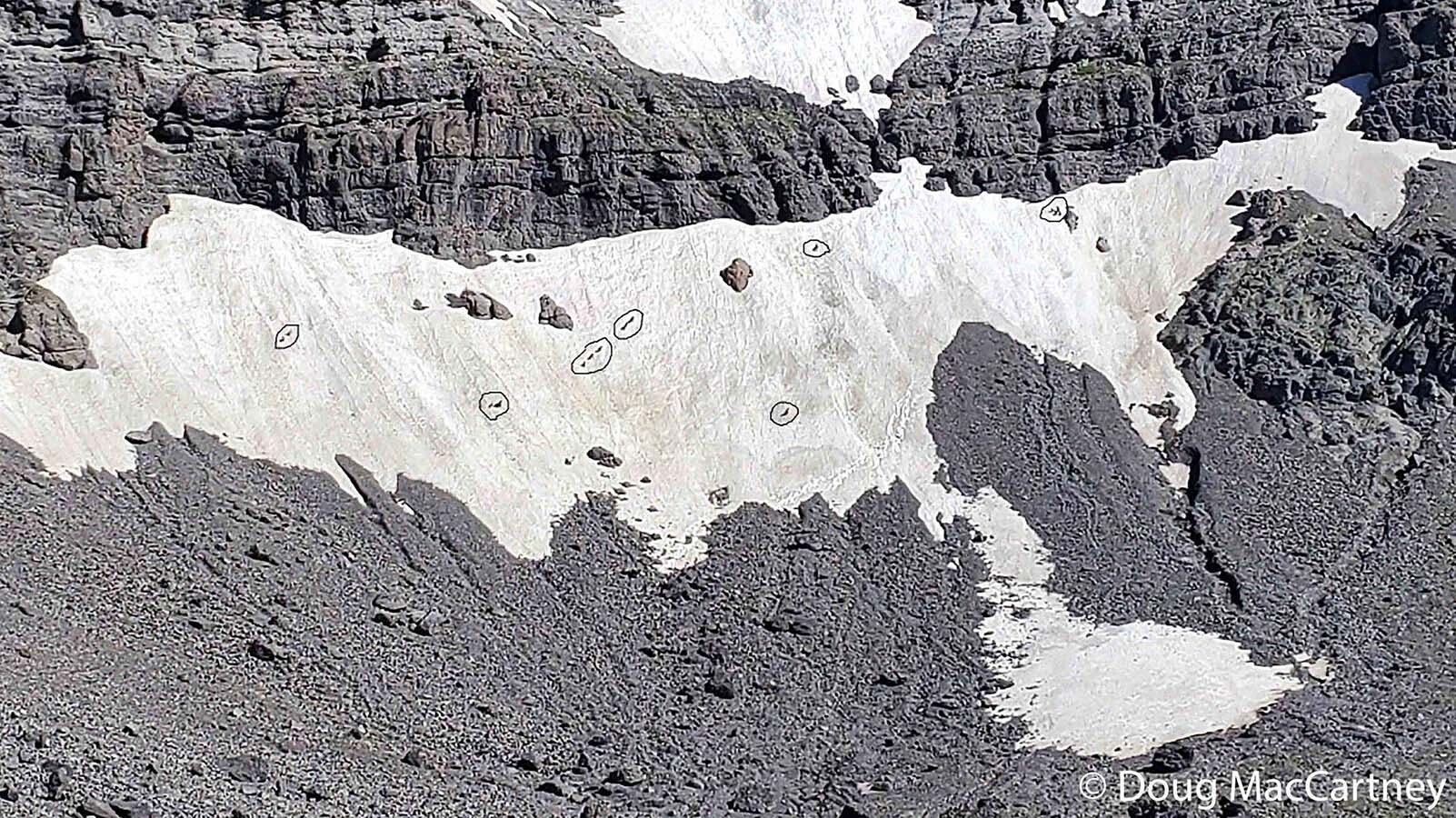Seeing even one wolverine in the wild is a rarity that few Wyoming outdoor enthusiasts can claim.
But seeing a dozen all at once? That’s a near-impossibility, wildlife biologists told Cowboy State Daily on Tuesday.
Even so, some backcountry guides claim to have seen 12, and possibly even 13, wolverines together in Wyoming’s Teton Wilderness this summer.
“That’s not something we’d expect to see. Wolverines are more solitary animals,” said Zack Walker, nongame wildlife supervisor for the Wyoming Game and Fish Department.
“To see a dozen, all in one area, would be a very rare event, and I definitely would need some good documentation to verify it,” added Nathan Kluge, furbearer coordinator for the Montana Fish, Wildlife and Parks Department.
‘We Couldn’t Believe What We Had Just Witnessed’
Three explorers in the Teton counted 12, possibly 13, wolverines chasing a female grizzly with two cubs on a rocky, partly snow-covered mountainside Aug. 8, according to an account posted on the Facebook Page of Yellowstone Insight, a backcountry guide company. It includes photos and a recollection of the sighting by wilderness guide Doug MacCartney.
“It was very hard for us to keep track of all of the wolverines and the bears as they fled the area,” MacCartney said in the post. “I counted, for sure, a total of TWELVE wolverine at one time! Steve said he counted THIRTEEN which I don’t doubt (especially after looking at the photos).”
The wolverines included at least one female with kits (young wolverines), he said.
“We couldn’t believe what we had just seen. We were all pumped up and in awe by what we had just witnessed,” he said.
Wildlife experts cited in the post said that the wolverines could have been drawn by animal carcasses or Army cutworm moths. Grizzlies are known to feast on the moths at high altitudes.
Calls, text and emails to Yellowstone Insight were not returned Tuesday.
Food Could Have Been The Draw
A plentiful food source could have set up such a near-impossible sighting, said Walker and Kluge.
“That area is known to have some pretty good food sources,” Kluge said. “It could mean that food sources were really low in other areas for all those wolverines to congregate like that.”
Tempting wolverine treats such as carcasses have on extremely rare occasions been known to draw groups of wolverines, Walker said.
“If there was some kind of food source that was so abundant that they weren’t having to compete for it, they might come together,” he said, adding that also could explain the aggression toward the grizzlies.
“If they were defending something, if there was a food source up there, they could have been chasing away anything that wasn’t a wolverine,” Walker said.
Rare Creatures Indeed
Under normal circumstances, wolverines each have a huge home range, so they tend to be scattered thinly across their habitat, Walker said.
There were 52 stations set up in some of Wyoming’s mountains to detect wolverines, he said. Those stations could include motion-activated trail cameras, bait – such as parts of deer carcasses and fur-catching brushes.
If a wolverine went for bait hung up in a tree, the trail camera could snap its picture, while the bush snagged a fur sample, he said.
Five years ago, wolverines were detected at six of those stations, he said. During the winter of 2021-2022, they were detected at 15 of the stations.
“We did detect more last winter than we did five years ago,” Walker said. “That might indicate our wolverine population in Wyoming is growing.”
All of the stations that detected wolverines were in remote areas of western and northwestern Wyoming, he said. None were detected at stations set up in the Big Horn and Snowy Range mountains.





